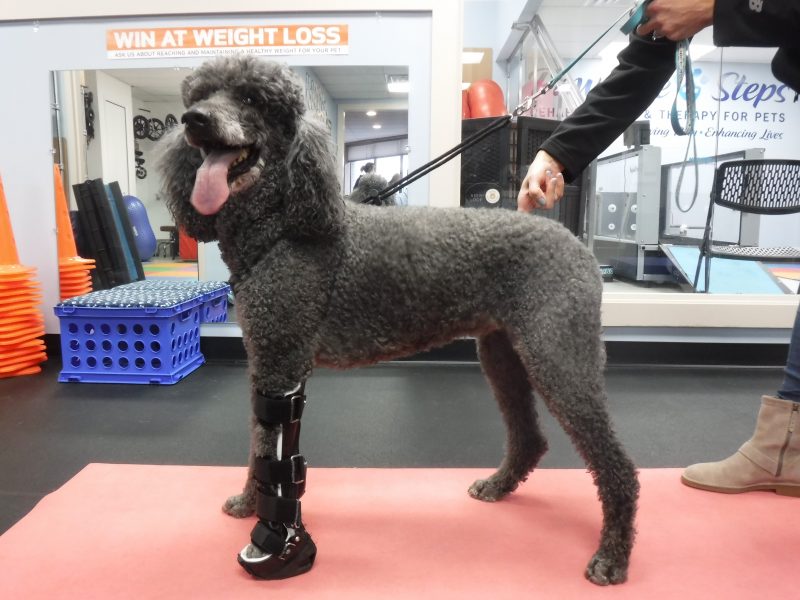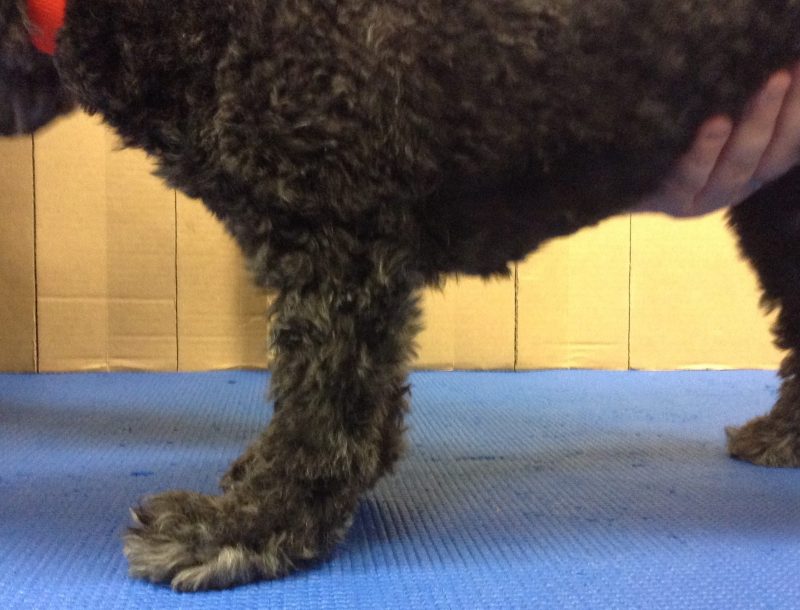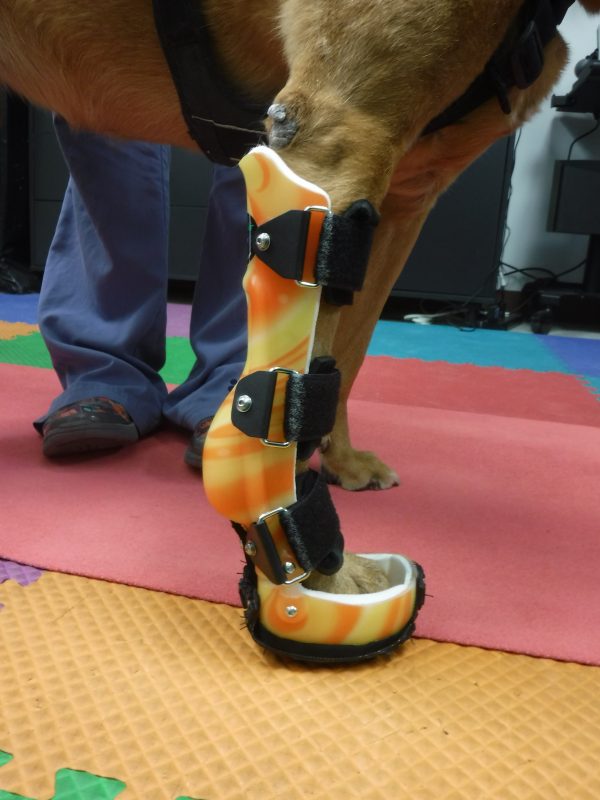Why the Long Paw?
By Janelle Allen, LVT
Carpal Hyperextension in the Canine
 Carpal hyperextension (CHE) is a mouthful to say. But what is it? CHE is a condition that affects the front limb of the dog, specifically the carpal joint. Wait, what’s a carpal joint? Let’s start by looking at your own arm. Would it surprise you to know that your dog has the same bones and joints in their front limbs as you do in your arms? It’s true! This means that YOU have a carpal joint. It’s your wrist (that’s why they call it carpal tunnel syndrome). We could spend all day discussing comparative anatomy (in a future blog perhaps?), but let’s get back to the topic at hand… See what I did there?
Carpal hyperextension (CHE) is a mouthful to say. But what is it? CHE is a condition that affects the front limb of the dog, specifically the carpal joint. Wait, what’s a carpal joint? Let’s start by looking at your own arm. Would it surprise you to know that your dog has the same bones and joints in their front limbs as you do in your arms? It’s true! This means that YOU have a carpal joint. It’s your wrist (that’s why they call it carpal tunnel syndrome). We could spend all day discussing comparative anatomy (in a future blog perhaps?), but let’s get back to the topic at hand… See what I did there?
A Closer Look at the Carpal Joint
The carpus (or wrist) is a very complicated joint in both humans and animals. There are a lot of bones that meet together with ligaments and tendons to form the joint. There is a huge range of motion as well. The carpus not only flexes and extends, it also rotates and shifts in multiple directions. However, there is not a lot of muscle tissue in that area. All the muscles that control the wrist and fingers, or toes in a dog, live up closer to the elbow (try wiggling your fingers of your right hand while feeling up near your elbow with the left hand). So the carpal joint does not have the support and protection from the muscles like other joints do, such as the elbow or shoulder.
Causes of CHE
Carpal hyperextension usually occurs by one of two methods. First there is an acute injury. For example, let’s imagine that a little chihuahua jumped from a countertop to the floor (oh no!). The force of the landing is driven through the toes and carpal joints first, and such a big fall for a little fellow can cause traumatic injury to the ligaments in the joint. The second culprit is degeneration of the ligaments, whether from severe arthritis or an immune-mediated disease. In either case, the ligaments can no longer keep the wrist at a proper angle (usually around 180-190 degrees or almost straight). This causes the joint to over extend and can make the paw appear to be longer.
What Can We Do?
There are two treatment options for CHE. One option is surgery in which the carpal joint is fused together and the joint is immobilized permanently. This means that all the motion that the joint was designed to be able to do will be removed. The other joints in the front limb then have to pick up the slack. The elbow and shoulder have to do more work in order to make up for the frozen carpal joint, which means more wear and tear on those joints over time.
The second treatment option involves supportive devices and rehabilitation therapy. Supportive devices range in levels of support and, if warranted for a specific patient, can still allow for a normal range of motion in the carpal joint. There are many companies that offer supportive braces for carpal joints. They are not all created equal however. You will need to consult with your veterinary rehabilitation team before deciding which device would be the best fit for your dog and your family. Use of a supportive carpal device in conjunction with rehabilitation will typically yield the best results. Structure exercises can help strengthen muscles as well as help to teach a dog how to use a supportive device. Most dogs are not used to wearing something on their legs or paws and may have trouble figuring out how to just walk with it on. Much of what we do in the early phases of rehabilitation is teaching our patients how to move with their new device in place. After that, we can focus on muscle strengthening to help provide as much support for the carpal joint as well as the rest of the body.
To Wrap It Up
Unfortunately, carpal hyperextension is a problem that we see often here at Pawsitive Steps. It can be a very uncomfortable condition and should be addressed sooner rather than later. There are many treatment options available for our pets that did not exist just a short time ago. We are glad that we can offer some relief for these patients and usually, so are our patients.
